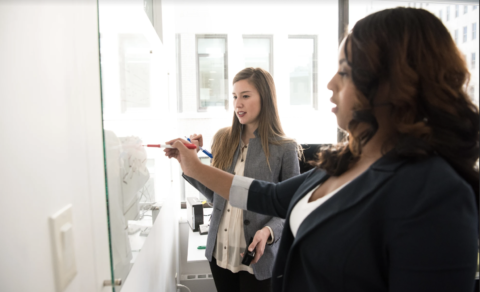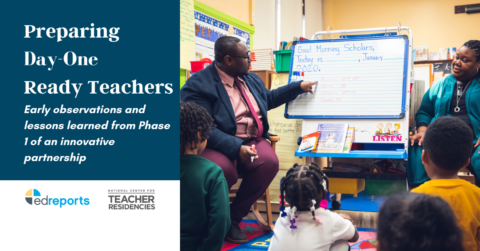Centering Quality Materials in Teacher Preparation Programs
Veteran educators share advice on how to reimagine teacher prep to ensure curriculum literacy.
Related Resources
article
3 Ways Instructional Leaders Can Support Teachers to Use High-Quality Materials
Why curriculum-aligned professional learning and coaching need to be included in any quality materials adoption process.
article
Developing Expertise in Quality Curriculum Made Me a Better Teacher
Tyler Cronin shares his journey as an EdReports reviewer and how collaborating with fellow educators has impacted classrooms across Nebraska.
article
Preparing Day-One Ready Teachers
The National Center for Teacher Residencies and EdReports highlight Phase 1 learnings from an innovative new pilot program to infuse curriculum literacy into teacher preparation.


